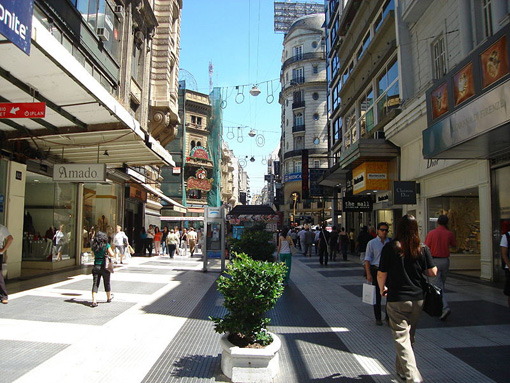Neighborhoods in Kuwait have lost their charm and have become glorified parking lots. What can we do about it and are there any guidelines that can help us in designing better neighborhoods? According to Andrés Duany and Elizabeth Plater-Zyberk, a husband-wife team of town planners and two of the founders of the Congress for the New Urbanism, the design of neighborhoods can be defined by thirteen elements:
1. The neighborhood has a discernible center. This is often a square or a green and sometimes a busy or memorable street corner. A transit stop would be located at this center.
This neighborhood center would be a small urban space dominated by the main mosque and filled with dense shopping and landscape architecture. Shopping should be fragmented into smaller elements that serve specialized needs; a florist, a butcher, an electronics repair shop, etc. The main groceries shopping should be far smaller than the current tradition of building co-op ‘malls’ in the center of every residential area. The malls are so big and the only way to approach them is by car. Parking is usually shared with the central mosque which means that during prayer time the parking is cannibalized between the two and nobody benefits. We have to stop consolidating everything into one building but rather think of it as a town center similar to what it used to be in the old days.
The idea of a ‘jam’eyiah’ is very foreign and they’ve recently started to become bloated and have evolved into mini-malls. I don’t mind the fact that they now have a wide-ranging selection; cafes, restaurants, boutique shops, etc. It is the fact that they are all being crammed into one (usually badly designed) building. What if they are all part of a public, covered, pedestrian street? The shops will be available to rent for whoever wants to, and subsidies will be given to young people of the area so that they can do what they’ve always dreamed. If the space is given to them at an affordable price they will make sure the street is fun, clean and safe. This will attract more young people to the neighborhood center and it will have a very fun and young vibe.

-A Kuwaiti neighborhood center?
Edit: This was one very long post with around 13 points. I decided to cut it into smaller pieces with each number being it’s own post. I have a feeling this will better incite discussion and help us develop the points further. Sorry for the confusion. The list will be compiled into the new ‘Neighborhood’ category found on the right.

As sceptical as I am about CNU, based on the stylistic choices usually affiliated with New Urbanism, the principles they do suggest in regards to urban development have much speaking for them. It will be interesting to begin considering how these principles, which are mostly conceived in the context of western cities (most which have already at least the foundations of a more ambulatory culture) here in the Gulf region. How do we remove the, often mentioned, ‘stigma’ currently linked to walking here? I suspect that the answer lies in a combination of various user and culture based stratums, such as the distance one would have to walk outside during the hot months (which would be a somewhat flexible and varying notion depending on season – being longer during the cooler months and much shorter, or even possibly non-existent, during the summer months), the strategic mixture of uses and types of shops, coffee-houses & restaurants and facilities flanking the area (the temptation factor), and the adaptability and ability to control the climactic conditions (through both passive & active means) of the district.
Tom, I definitely agree, you can read the points without being pigeonholed by actualized New Urbanism type projects; and in principle make them more relevant to our climate, culture, etc.
But I guess the post to me poses two relevant and timely questions.
1. What is the new typology of a neighbourhood in Kuwait?
2. What can you do to improve existing neighbourhoods?
I know I have been contemplating these particular questions in my head for some time now. The population is increasing and our existing mode of living is not –for lack of a better word–sustainable.
How can we make our neighbourhoods more ecological? liveable? pleasurable even? It’s really about the quality of life we want inhabitants to be able to lead.